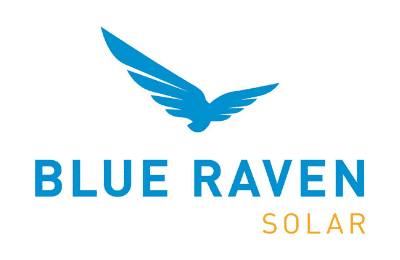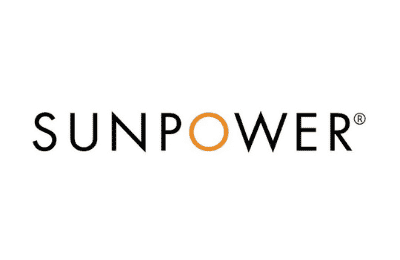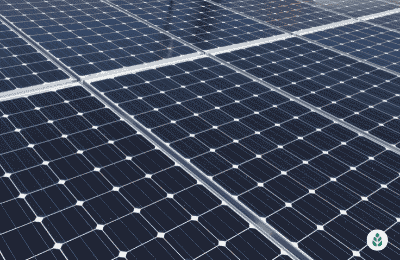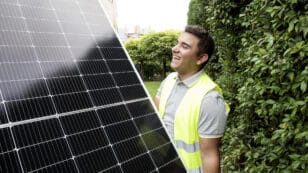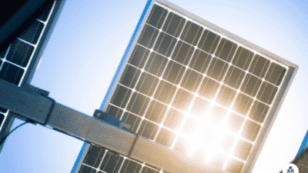
Solar Panel Cost in Arizona (2024 Local Savings Guide)
In this guide to the average cost of solar panel systems in Arizona, you’ll learn:
- How much does the average solar system cost in Arizona?
- How can you save money by going solar in Arizona?
- Are there any ongoing solar panel maintenance costs to consider in Arizona?
Each product and or company featured here has been independently selected by the writer. You can learn more about our review methodology here. If you make a purchase using the links included, we may earn commission.
How Much Do Solar Panels Cost in Arizona?
The average Arizona resident will pay around $24,231 for a complete solar system after the federal solar investment tax credit (ITC) is considered. Before the credit is applied and without the local sales tax exemption, you’re looking at an average total of $34,615.
These prices assume you would need an 11.5 kilowatt (kW) system — the typical size required to offset the average monthly electricity consumption of 1,114 kilowatt-hours (kWh) per month in Arizona — and pay the average local price per watt of $3.01.
The size system you’ll need is one of the most crucial factors that affect your pricing. But it can be challenging to estimate exactly the size you’ll need without having a professional solar installer provide a free quote.

Blue Raven Solar
Pros
- Industry-leading in-house financing
- Competitive pricing
- Excellent reputation
Cons
- Doesn't offer solar batteries (coming 2022)

Sun Valley Solar Solutions

Local Service
Average cost
Pros
- Offers products from leading manufacturers
- Competitive pricing
- Many financing options
- Multitude of products and services
Cons
- Relatively short workmanship warranty
The table below includes average solar system costs and the home square footage that is often appropriate for that size.
| Size of Your Solar Panel System | Typical Cost in Arizona (Before Tax Credit) | Cost After Federal Tax Credit | Average Home Size the System Can Support |
| 9 kW | $27,090 | $18,963 | 1,300 sq. ft. |
| 10 kW | $30,100 | $21,070 | 1,500 sq. ft. |
| 11 kW | $33,110 | $23,177 | 1,700 sq. ft. |
| 12 kW | $36,120 | $25,284 | 1,900 sq. ft. |
| 13 kW | $39,130 | $27,391 | 2,100 sq. ft. |
| 14 kW | $42,140 | $29,498 | 2,300 sq. ft. |
| 15 kW | $45,150 | $31,605 | 2,500 sq. ft. |
*Note: It’s convenient to see system sizes and prices based on home square footage, but it’s far better to size your system based on your monthly and annual electricity demands. These numbers provided are just estimates based on average consumption rates for different sized homes.
How Does the Current Cost of Solar in Arizona Compare to the National Average?
As mentioned above, the average cost per watt for photovoltaic (PV) equipment in Arizona is around $3.01. This is well below the national average of $3.33, which means you get quite a bit more for your money in the Grand Canyon State.
However, the total price for solar power systems in Arizona hovers around $24,231 after the federal credit, which sits well above the national average of $20,979.
You’re likely to pay more for PV equipment in Arizona because the state has above-average energy needs, which demands a larger system to offset costs. Arizonans use an average of 1,114 kilowatt-hours (kWh) per month, as compared to the U.S. average of 881 kWh.1 More energy usage means larger system requirements, which leads to higher solar conversion prices overall.
With that being said, your savings are also likely going to be much higher than they would in other states because you have higher energy bills to offset, which can translate to higher savings each month.
Watch Below: Does This AZ Homeowner’s Cost Savings Make Solar Worth It?
How Are Solar Costs Trending in Arizona?
The Solar Energy Industries Association (SEIA) has determined that the cost of PV equipment in Arizona has dropped by around 53% in the past decade.2 Thanks to industry-wide advancements in solar technology, efficiency and panel production, a system that would have cost approximately $73,648 in Arizona 10 years ago will now total about $34,615 before the federal credit.
According to the U.S. Bureau of Labor Statistics, energy costs have increased in the past decade in Arizona and are expected to continue along that trend.3 So if you’re feeling the pinch, you’re not alone.
Although the 2.7% cost increase in Arizona electricity prices pales in comparison to the nationwide jump of around 15.5%, higher electricity rates can make a difference when considering the cost of living in Arizona. Not to mention, the electricity cost increase in Arizona the year before was closer to 6%.4
As access to fossil fuels becomes more and more scarce and more customers turn to clean energy, the burden of sticking with traditional energy sources will become ever higher.
The estimated cost of energy if you stick with fossil fuels in Arizona over the next 25 years — in line with the expected life of most solar panel systems — is around $69,597. Compared to the average savings of $34,982 of going solar for the same timeframe, converting to renewable energy is clearly the better financial decision, potentially saving over $100,000.
How Much Can You Save By Going Solar in Arizona Today?
If you convert to solar in Arizona today and pay cash for your system, you’re expected to save an average of $34,982 in utility bills over the lifespan of your system. This is after the panels provide enough savings to pay for themselves.
Keep in mind that these estimated savings are based on current energy prices. In reality, you’ll likely save more over time as electricity prices continue to go up.
The way you pay for your solar system also makes a big difference in your total costs over time. The three primary payment options are:
- Cash payment
- Solar financing
- Solar lease
The chart and sections below will provide information on how and when each of these payment options is beneficial.
| Solar Financing Option | Initial Cost | Payback Timeline | Est 25-Year Savings |
| Cash | $34,615 (after the federal credit) | 11 years* | $34,982* |
| Loan | Often $0, but higher down payments can reduce your payback timeline and your total interest paid | 14 years* | $29,000* |
| Lease | Usually $0 | N/A (you never own the system, so there isn’t a payback period) | $6,000 |
*These are conservative estimates intended to represent base-level averages. In most cases, customers can see an even higher return on investment (ROI) and shorter payback timelines.
We’ll explain the upsides and drawbacks to these options below, but before we do, it’s worth mentioning that the solar financing landscape is changing in the U.S., and those changes are likely going to make their way to Arizona, too. California recently pushed out net metering 3.0, which reduced the credit rate for excess energy you export to the grid. That means lower savings overall, and it also means batteries are now more or less a requirement to see maximum savings from your system.
Batteries add between $10,000 and $20,000 to your system costs, on average, which means this change is going to make going solar more expensive all around. That bump in price also means that fewer homeowners will be able to afford to make a cash purchase or get a solar loan. While we don’t recommend leases or PPAs now, we do see these becoming more popular and valuable options in the future when system costs go up.
Keep in mind that Arizona currently uses net billing, which already isn’t ideal, so the negative effects of net metering 3.0 won’t be as negative as they will in other states that use one-to-one net metering.
Cash Purchase of Solar System
Using cash to buy your solar PV system is the best option from a purely financial perspective. Paying upfront means you won’t add interest to your total payment, which means your long-term costs will be the lowest. In other words, paying with cash also means you’ll see the shortest payback timeline and the greatest overall energy savings.
Using cash also lets you take advantage of all the available incentives for solar equipment in Arizona, including the federal credit. This isn’t the case for all payment options.
Of course, buying your solar panel system with cash requires that you have the full amount upfront, which may be unrealistic for Arizona property owners. Keep in mind that the full amount — $34,615 on average — does not consider the federal tax credit. You can recuperate some of that money on your tax bill, but not until you file taxes for the year you install your system.
Using cash to buy your panels will, however, lead to instant savings on your monthly expenditure. Most customers can offset close to their entire utility bills, which means you could go from paying the local average monthly electric bill of $157.41 to paying almost nothing.5
Below are some of the pros and cons of choosing a cash purchase to acquire your PV system in Arizona.
Pros of a Cash Purchase in Arizona
- Lowest overall price for your system
- You can take advantage of all solar incentives
- You don’t need good credit or a credit check
- Leads to the highest long-term savings
- Provides the shortest payback period
Cons of a Cash Purchase in Arizona
- Requires that you have the full amount in cash upfront
Taking Out a Solar Loan
If paying $35,000 in cash for your panels is not a realistic option, a solar loan may offer a more affordable way to obtain your solar system. Solar loans are financing deals made specifically for PV equipment, and the options available make going solar far more accessible, especially in Arizona, where system totals are around $5,000 higher than the national average. Plus, the required down payment is often $0.
Just like other loans, this payment method will lead to higher overall costs because you’ll be paying the principle of the loan plus interest. This also means your panel payback timeline will be a bit longer, and your overall savings will be around $5,000 lower than with a cash purchase.
Loan approval will require your financier to run a credit check, so loans also require that you have at least decent credit.
The good news is that many customers who opt for a loan see their monthly energy expenditure drop or remain the same. Many lenders can structure your deal so that your monthly payment is at or below what you currently pay for electricity — around $157.41 in Arizona.
Below are some of the most compelling upsides and downsides to using a loan to finance your solar system in Arizona.
Pros of a Solar Loan in Arizona
- Significantly lower upfront costs than cash purchases (sometimes $0)
- You can take advantage of all solar incentives in Arizona
- Leads to panel ownership
- Makes solar far more accessible
Cons of a Solar Loan in Arizona
- Loan interest will drive up the all-in system total
- Your payback period will be longer than with a cash purchase
- Lifetime savings will be decreased by how much interest you pay
Solar Lease
A solar lease is a different financial arrangement entirely, which doesn’t lead to panel ownership. Instead of paying to own, you lease the PV equipment from a solar energy company, and you get to use the electricity it produces to offset your electric bills. In most cases, your leasing company can make it so your monthly lease payment is at or below your current electric bill. The rate you’re charged should be below the average per-kWh rate in Arizona of 14.13 cents.
The major upside of leasing is that you typically won’t need to pay anything upfront. The arrangement does require a credit check, but solar customers who don’t qualify for loans will often qualify for leases.
There are some pretty substantial downsides to leasing, though. You’ll never own your panels, which means there is no payback timeline after which you will see a profit. Also, leases don’t let you take advantage of the federal credit, which is an average of $10,385 you’ll miss out on in Arizona.
Finally, leases save you the least amount of money over time. They’ll still provide an average of around $6,000 in lifetime energy savings, but this pales in comparison to the $34,982 you’d save if you paid in cash.
Still, leases have merit, and they’re likely going to become more popular once net billing gets downgraded in the future. There’s no clear answer as to when this will happen, but it very likely will, as it is in other states.
Below, we’ll include some benefits and drawbacks of choosing a lease to acquire your PV equipment in Arizona.
Pros of a Solar Lease in Arizona
- Usually requires no money down
- You never pay for repairs or maintenance
- You can support renewable energy without a large investment
Cons of a Solar Lease in Arizona
- Doesn’t lead to panel ownership
- Yields the lowest savings of any other form of payment
- Doesn’t let you take the federal credit
You can use this solar calculator to estimate your total expected savings based on your preferred payment method, average home size and location in Arizona.
How Do You Get the Best Solar Prices in Arizona?
With average systems totaling just over $34,000 for solar PV systems, Arizonans understandably look for ways to save money in the conversion process. There are a few things you can do to keep your costs down, including:
- Filing for the federal investment tax credit
- Taking the Residential Solar Panel Tax Credit, available to all Arizona homeowners
- Consider installing a solar storage solution
- Get multiple solar quotes for your installation
In the sections below, we’ll include some information on these money-saving strategies and explain how each can help bring your total system price down.
File for the Federal Solar Tax Credit
One of the easiest and most efficient ways to bring down your total system costs is to file for the federal tax credit. This is a solar incentive offered by the federal government, and it is available to all Arizona residents.
The credit is for 30% of your total system cost, including panels, batteries, inverters and installation labor. In Arizona, this comes out to around $10,385. This amount gets credited to your income tax burden for the year you install your system. If you can’t take the entirety of the credit the year you install your panels, you can roll over any remaining credit to future tax bills for up to five years.
Keep in mind that the federal credit is not a rebate, but it can effectively save you money on your system by bringing down the amount you owe in taxes.
The credit is currently for 30%, but under the Inflation Reduction Act, will drop over the next decade according to the following schedule:
- The credit rate will be 30% for systems installed between 2022 and 2031
- The credit rate will drop to 26% in 2033
- The credit rate will drop to 22% in 2034
- The credit will no longer be available in 2035
Filling for the ITC is a breeze, too, which makes it even more appealing. You just need to fill out IRS form 5695 and file it with your taxes to take the credit.
Take the Residential Solar Energy Tax Credit
In addition to the federal credit, Arizona property owners can also take the Arizona Solar Tax Credit for PV equipment. The credit is for 25% of your system total or $1,000, whichever is lower. In Arizona, where the average system total is over $34,000, most residents can take the full $1,000.
This credit works similarly to the federal credit: it gets deducted from your tax liability rather than offered as a rebate.
Filing for this credit is also straightforward, and you just need to fill out Arizona Tax form 310. Your solar installation company should be able to help you file.
Consider Installing Solar Batteries
Solar panels save you money when they offset your electric bills, so maximizing your energy savings is essential for making sure your investment in solar is worthwhile. In many states, a program called net metering helps you take full advantage of your energy production, even when your consumption outpaces your production.
Unfortunately, the Arizona Corporation Commission shut down the state’s net metering program in 2016 and replaced it with net billing, which is much less beneficial. So unless you have batteries installed with your panels, most of the value of any excess energy you generate will be lost to your power company.
For this reason, many Arizona residents are coupling their panels with batteries, like Tesla Powerwalls. These let you store your excess power production for use when your panels are under-producing, like on cloudy days or at night. Batteries are expensive, but they can maximize your long-term savings and end up being a great investment in Arizona.
Get Multiple Quotes for Your System
Finally, we recommend getting multiple quotes for your solar electric system. According to the SEIA, Arizona is home to over 160 solar companies.6 Each of these providers charges different prices for their labor and materials.
We suggest getting a quotes from at least three solar installers in your area and comparing the estimates based on overall cost, quality of the equipment and warranty coverage.
Higher-efficiency and more durable monocrystalline panels can cost more than lower-quality polycrystalline panels, but they’re also often worth the added investment.
What Factors Affect the Average Cost of Solar Panel Systems in Arizona?
It’s not uncommon for the price of solar panels to fall between $18,963 and $31,605 in Arizona after the tax credit. There are a few factors that affect the average price range in your area, including:
- The equipment you install
- The financing option you choose
- The solar panel installer you hire for your home solar project
In the sections below, we’ll provide some insight into the role each factor plays in determining your total system price in Arizona.
The PV Equipment You Install
In large part, your solar equipment pricing will depend on the type of equipment you need and the panels you choose.
Arizona is the sunniest state in the country, with certain areas receiving 300-plus sunny days per year.7 In comparison to the national average of 205 sunny days per year, it’s easy to see why Arizona homeowners don’t need high-efficiency panels.
The panels that excel in low-sun conditions are often more costly than others, so the abundance and intensity of sunlight in Arizona can help save you money on solar equipment. Arizona is located in the southern half of the country, as well, so solar irradiance and sunlight intensity are high, which also help to boost production.
Arizona also doesn’t experience much extreme weather (aside from the heat), so the need for solar batteries is relatively low when it comes to blackouts. However, batteries can help maximize your savings, especially since Arizona uses net billing, which isn’t ideal for saving money on your electric bills with solar unless you have batteries as well. Batteries will push up installation costs, though.
How You Pay for Your Panels
Although the cost of solar equipment on a per-watt basis in Arizona is lower than in many other states, your system will still be expensive, and how you choose to pay for it can add to the cost.
Most residents choose between cash purchases and solar loans. A cash purchase comes with a very large up-front cost but saves you the most over time. A solar loan requires little or no money down, but you’ll end up paying more — and saving less — because of the interest charges.
Arizona doesn’t have legislation that allows or promotes Property Assessed Clean Energy (PACE) programs to make financing solar more accessible and affordable.
However, Arizona Public Service (APS) does have a program for low-income households and solar communities, through which it will install solar for free and credit your electricity bill each month. The credit is minimal, but it’s a great way for low-income households to go solar without a massive up-front or long-term cost.
The Local Installer You Hire
The solar installer you choose for your system can also play a role in your total equipment cost. Just as with any other home improvement contractor, each installer can charge different labor fees and prices for equipment. Choosing panels and equipment from one installer could yield a different price than the same equipment from another installer.
There are many solar installers to choose from in Arizona, and it’s important that you assess each based on overall value and not just cost.
For example, SunPower, one of the most prominent national solar installers operating in Arizona, only installs Maxeon panels. These are some of the most expensive panels on the market, but they also provide the best efficiency, durability and warranty.
Sun Valley Solar Solutions and Elevation Solar, two other installers, offer other, less costly brands of equipment, including:
- Tesla
- REC
- SolarEdge
- Panasonic
All of these brands should suit you well, but it’s important to choose panels based on value, cost and budget to ensure you get the best value for your home.
Are There Any Maintenance Costs of Going Solar in Arizona?
While the initial cost of converting to solar can be high, the long-term cost is relatively low. Thankfully, PV equipment is generally maintenance-free, although there are some things you might need or want to do over the life of your panels.
One of the most common ongoing maintenance costs for solar panels is panel cleaning. Since your panels are constantly exposed to the elements, dust, dirt, pollen and other debris can accumulate on the surface. Any debris that blocks sunlight will cause your panel production — and overall energy generation — to drop, leading to slightly lower energy savings in some cases.
Unfortunately, this is a common issue in Arizona, where the average annual rainfall — which would normally keep panels clean — is well below the national average, sitting around 12 inches, which is less than 30% of the national average of 38 inches.8
It’s a good idea to keep an eye on your panel production, but even if you don’t see a drop, it might be worthwhile to schedule panel cleaning once every six months or so. This service typically costs between $75 and $150 in your area.
Some customers also find that panel removal services are necessary to carry out roof replacement or repair. This is a rarity, especially in Arizona.
The reputable solar installers in the Grand Canyon State should let you know if roof replacement is a good idea before installation. But, roof damage and roof leaks are rare in Arizona due to the lack of rainfall.
If you do need roof servicing, you could be looking at between $500 and $1,000 for removal and replacement.
Typical Costs of Solar Providers in Arizona
Since there are over 130 solar companies in Arizona, choosing one that suits your needs and carries the equipment you want shouldn’t be an issue. However, finding the best fit for your solar project and budget can still be challenging.
The chart below includes some of our top picks for the best solar installation companies in Arizona, plus comparative pricing to help you decide which of these you are likely to be able to afford.
| Solar Installer | Average Solar Panel Installation Cost Per Watt ($-$$$$$) |
| SunPower | $$$$ |
| Sun Valley Solar Solutions | $$ |
| Elevation | $$$ |
| Verde Solar Power | $$ |
| ADT Solar | $$$ |
Read More About Going Solar in Arizona
- Best Solar Installers for Your Home in Arizona
- Guide to Arizona Solar Benefit Programs
- Is Going Solar Worth It in Arizona?
The cost information presented in this article is derived from a comprehensive analysis, incorporating data from multiple industry sources. The average cost per watt per state was calculated based on figures from Consumer Affairs, Energy Sage, and Berkeley Lab’s Electricity Markets & Policy Department. Additionally, monthly energy consumption and the average monthly cost of electricity were sourced from the U.S. Energy Information Administration, ensuring a well-rounded and accurate representation of the information presented.
FAQ: Arizona Solar Panel Costs
At EcoWatch, we’re happy to get questions about the process and costs of getting rooftop solar from Arizona residents. Below are some of the questions we see most often, along with our responses. If you have specific questions that aren’t answered here, reach out to our team of solar experts at solar@ecowatch.com.
The average payback timeline for solar panels is about 11 years, and the average lifespan of a system is about 25 years. The payback timeline can be longer or shorter depending on the size of your system, tax incentives utilized and the total cost of your solar project.
Yes! One of the most significant “passive” benefits of installing PV equipment on your home is that the value is expected to increase by around 4.1%.9 With the average property cost in Arizona hovering around $423,568, that’s a typical increase of $17,366.10 The bump in value can be even more substantial in higher-cost areas, like Phoenix.
Not only is this a drastic increase in property value, but you also won’t pay additional taxes as a result of the value bump. Thankfully, Arizona offers all residents a property tax exemption, which prevents your taxes from going up as a result of installing PV equipment.
Many homeowners across the country have dropped their energy bills to $0 per month by converting to solar. However, this is far more common in states that have beneficial net metering programs.
Unfortunately, Arizona got rid of net energy metering in 2016. As such, it’s much more challenging to eliminate your electric bills with solar panels. If you choose to install batteries to take advantage of overproduction, you have a much better chance of eliminating your utility bills.
Generally speaking, it’s a much better financial decision to buy your panels than it is to lease them or use a power purchase agreement (PPA) to acquire them.
Using a cash purchase or loan will yield far greater long-term savings — sometimes four times more — than opting for a lease. Plus, buying or financing your panels will lead to panel ownership and will let you take advantage of tax credits.
With financing on the table, down payment requirements can also be $0, making a loan a better option overall than a lease.
Related articles
Top Installers For Arizona
Comparing authorized solar partners
-
- Industry-leading in-house financing
- Competitive pricing
- Excellent reputation
- Doesn't offer solar batteries (coming 2022)
A+Best Solar Financing2014Trina Solar, Canadian Solar, SolarEdge, Silfab, SunPower25-year manufacturer warranty; 10-year workmanship warranty, 2-year production guarantee
Having trouble deciding? Click below and use our process to receive multiple quotes instead:

 233k
233k  41k
41k  Subscribe
Subscribe 
